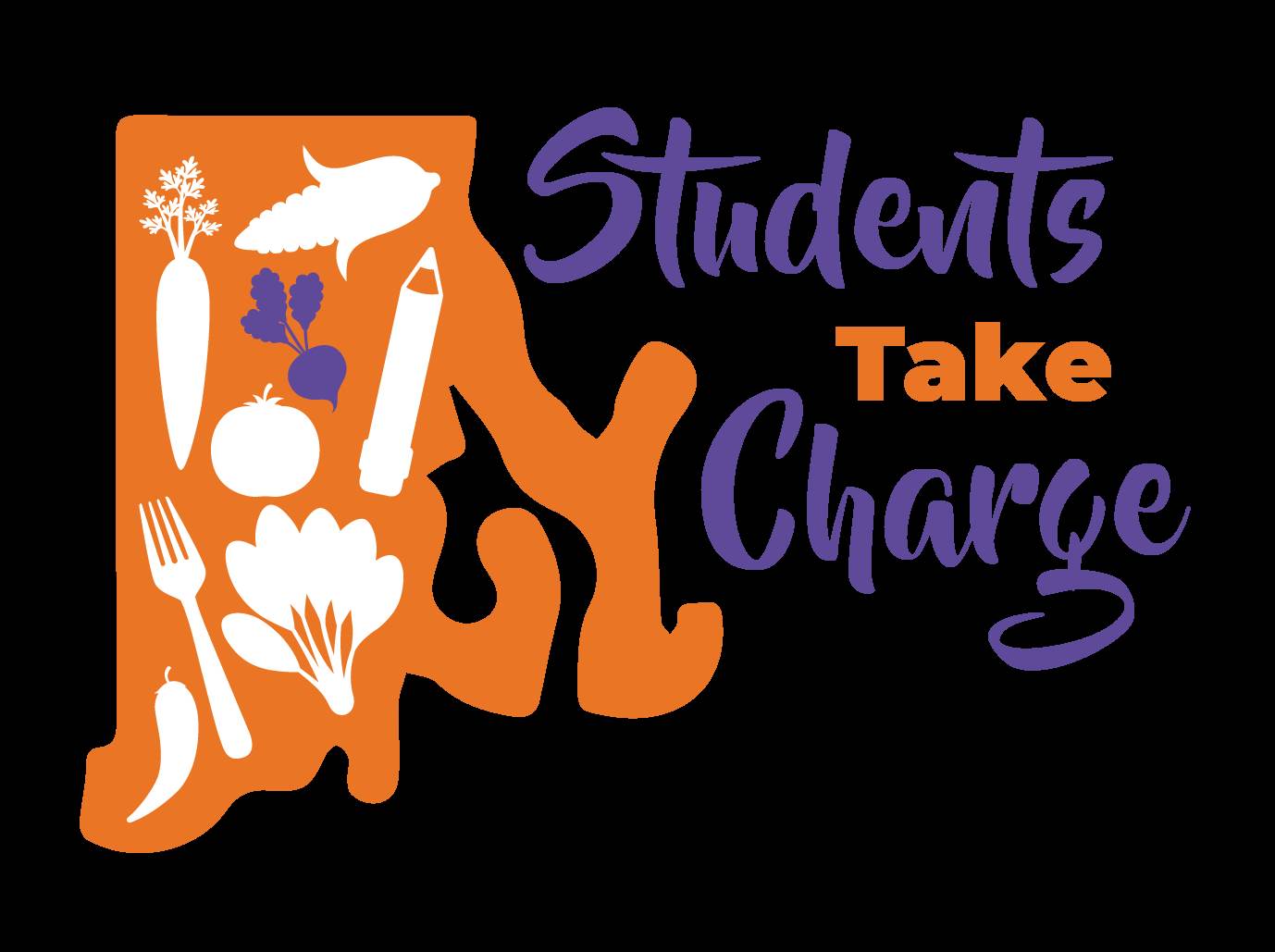Education and Resources
Fresh Fruit and Vegetable Nutrition Curriculum
The University of Rhode Island SNAP-Ed Fresh Fruit and Vegetable Program (FFVP) Nutrition Curriculum now offers two tailored versions: one for grades K-2 and one for grades 3-5. Each curriculum includes 8 to 9 brief, flexible, interdisciplinary, and developmentally appropriate lessons designed to make nutrition education fun and relevant (see lesson highlights). Lessons can be taught by health teachers, classroom teachers, or school nurses.
To make the most of the FFVP, teachers can also use the “Fun Facts” and “Color Chart” messages that accompany each fruit or vegetable tasting. These short prompts help turn snack time into a meaningful learning opportunity.
Classrooms can also extend their learning with activities that may be done school-wide, between select classrooms, or within a single classroom. Students may participate in the Rainbow Challenge (appropriate for grades K-5), a competition that encourages them to try more of the fruits and vegetables provided by the FFVP, or the Planet Protectors activity (appropriate for grades 3-5), which promotes healthy habits while reducing food waste and protecting the environment. See the Rainbow Challenge and Planet Protectors directions and poster tabs for more details.
How To Use This Curriculum
- Grades K-2: Lessons take about 10-15 minutes. Activities are short, interactive, and hands-on to keep younger students engaged.
- Grades 3-5: Lessons take about 20-30 minutes and include more advanced content and critical thinking activities.
Materials are flexible, so teachers may combine lessons or save parts for later. Most lessons include worksheets and activities that can be done individually, with partners, or in groups. Lessons can also be extended or explored more in-depth depending on the activities chosen to complement the core content. Curriculum connections to language arts, math, science, and social studies are built in.
Across all grades, students also learn about food groups through USDA MyPlate, a guide for healthy eating. Free MyPlate posters are available at www.fns.usda.gov/tn/myplate-posters.
Lesson Highlights By Grade
Grades K-2
- Build excitement around eating and trying new fruits and vegetables, supported by fun sensory activities that engage sight, smell, touch, and taste.
- Learn how different colors of fruits and vegetables help the body stay strong, with the goal of “eating the rainbow” each day.
- Explore where fruits and vegetables come from and how they grow, using stories, posters, and gardening connections.
- Practice simple math, reading, and descriptive writing skills through colorful worksheets, riddles, and food journals.
- Participate in the Fruit and Veggie Taster’s Club and use Tasting Passports to celebrate curiosity, bravery, and progress in trying new foods.
Grades 3-5
- Strengthen decision-making and critical thinking skills by exploring how food is grown, prepared, and marketed.
- Use sensory analysis to describe foods, discover new flavors, and understand how preparation methods can change taste and nutrition.
- Examine how the media and advertising influence food choices, then create posters and persuasive messages to encourage peers to eat more fruits and vegetables.
- Engage in hands-on math and science connections, such as serving size estimation, fractions, and plant part identification.
- Explore cultural inclusivity by recognizing and discussing fruits and vegetables from different cuisines and traditions.
- Extend learning into the cafeteria with Planet Protectors and other school-wide initiatives that promote healthy eating and reduce food waste.
The Fruit and Vegetable Jeopardy Games can be used for an assessment after all the lessons have been taught. Teachers can access the games for Grades K-2 and Grades 3-5 by using the tabs above.
If you have any questions about the Fresh Fruit and Vegetable Nutrition Curriculum, contact Stephanie Carlile MS, RDN, LDN at scarlile@uri.edu
Students Take Charge Curriculum

The University of Rhode Island (URI) Supplemental Nutrition Assistance Program- Education (SNAP-Ed) team has led the Students Take Charge (STC) program since 2015. For over a decade, students have been empowered to become wellness advocates in their schools by having the opportunity to see their community reflected in school meals and to recognize their meaningful voice in shaping their environment. The STC program supports the adoption of healthy eating behaviors and provides students with tools to positively influence the nutrition environment around them. The STC program goals are:
-
- Educating students on the benefits of healthy eating, with a focus on fruits and vegetables
- Identifying barriers to better nutrition and developing solutions that can be applied at school and at home
- Learning how policies, systems and their home and school environment affect behaviors
- Introducing students to their district’s Wellness Committee and encouraging connection and advocacy
- Inspiring long-term engagement in school wellness policy and practices
As part of the Team Nutrition grant, the Rhode Island Department of Education (RIDE), URI SNAP-Ed, Farm Fresh Rhode Island, Johnson & Wales University, and Rhode Island Healthy Schools Coalition set a goal to expand the successful STC program so that all students in Rhode Island can participate.
How to use this Curriculum
The Students Take Charge (STC) Toolkit provides best practices, timelines, handouts, and curriculum for the nutrition education program. To ease the burden of delivering this great program to Rhode Island students, the toolkit includes these resources for the following lesson types:
The goals are the same for any STC lesson option; the user decides which works best for their group of students. Additionally, the user can choose to use the lessons together or separately.
